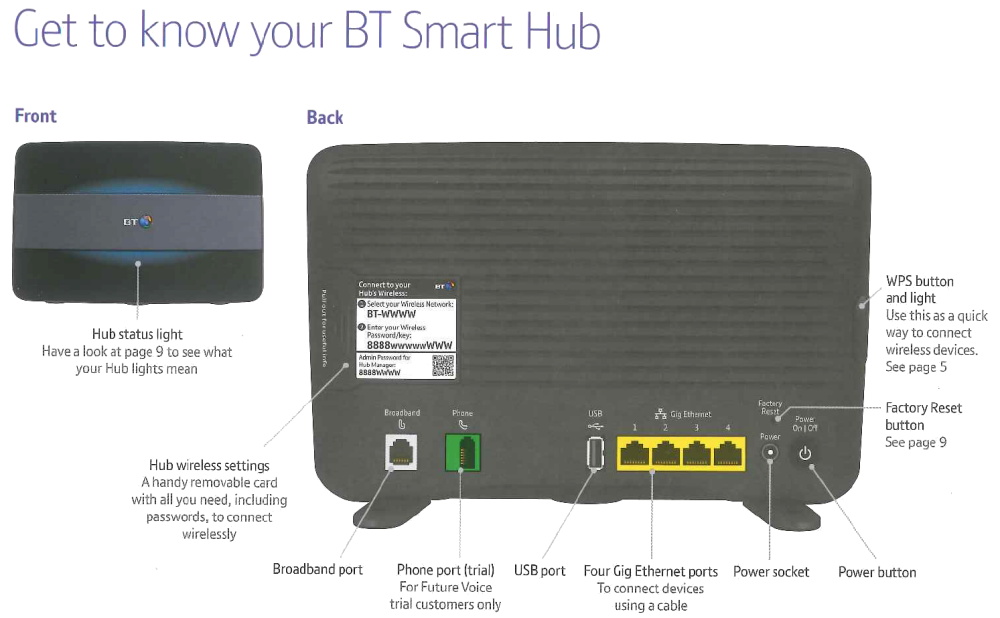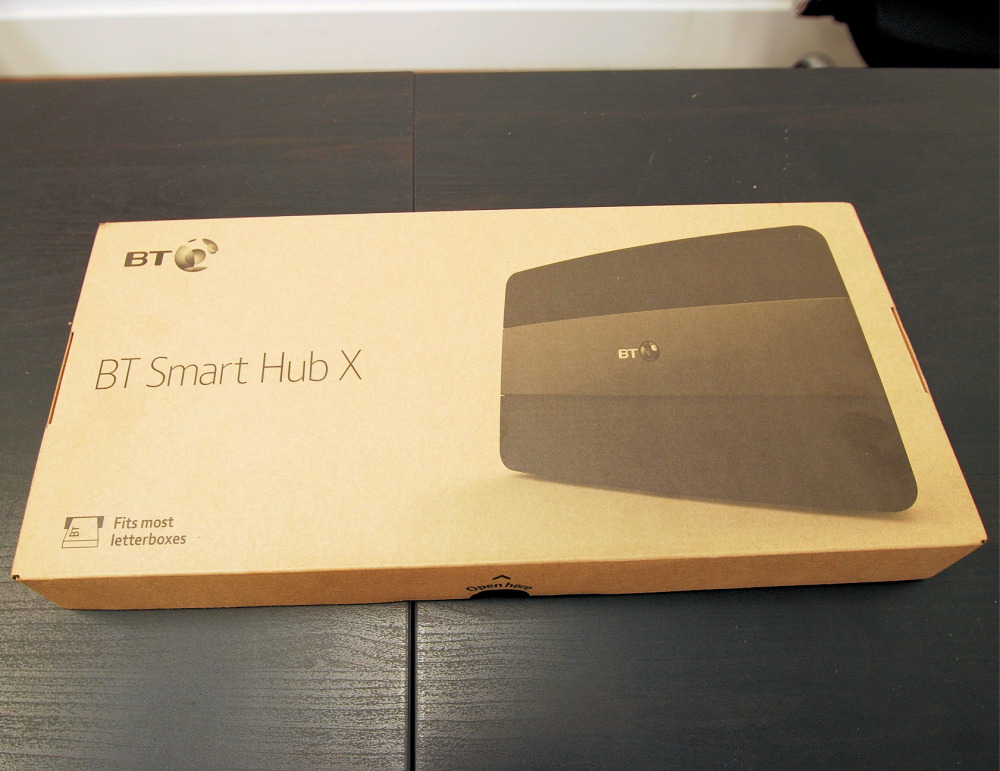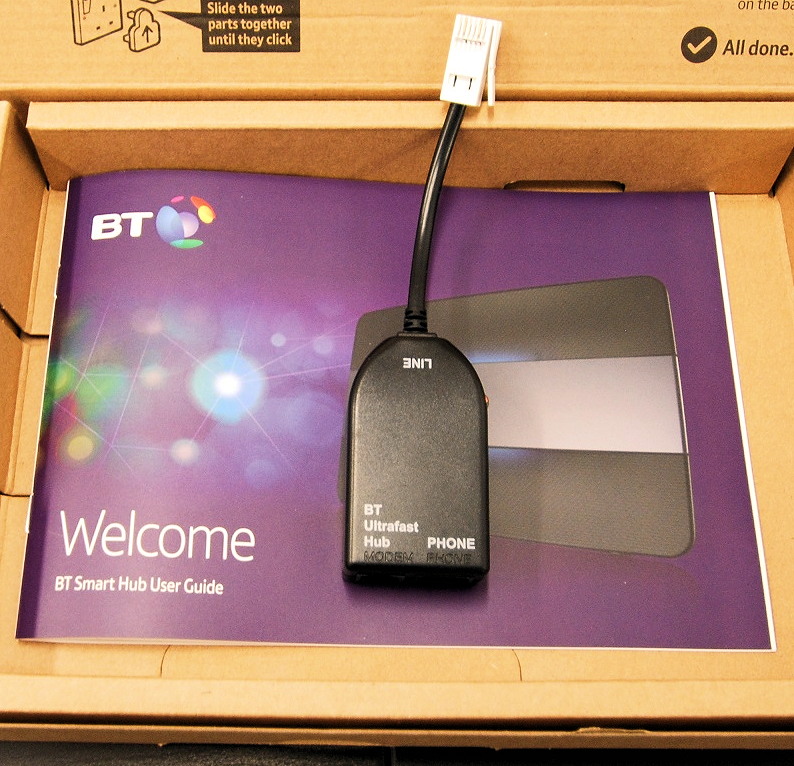UPDATE ISP BT to Launch New Smart Hub X Router with G.fast Broadband
Customers taking part in BT’s trial of the new ‘up to’ 330Mbps capable G.fast broadband technology, which aims to cover 10 million premises across the United Kingdom by the end of 2020, look set to receive a new SmartHub X wireless router that integrates the G.fast modem inside.
Previously those taking part in Openreach’s earlier pilot have tended to receive a separate Huawei MT992 modem (example), which would connect into the back of your existing wireless router via the WAN port. Initially we had expected that the first commercial products would follow this approach but instead it looks as if at least some ISPs are already playing with fully integrated single-device solutions for G.fast.
Visually the new Smart Hub X (HomeHub 7 if you prefer) looks very similar to BT’s existing Smart Hub router for FTTC (VDSL2) lines, except for the fact that it adds G.fast support and on the backside they’ve added an additional port for telephone connections, which sits immediately next to the RJ11 broadband socket. Otherwise you get the same 4 x Gigabit Ethernet ports and a 1 x USB socket as the original model.
Advertisement

The addition of a telephone port reflects what is likely to become an increasingly common requirement as Openreach moves their network toward a broadband-first approach (SOGEA or SOGFast), which in the future will see consumers buying a broadband line first and then optionally adding the phone / voice service afterwards (VoIP). Today you tend to purchase the copper phone line first (unless bundled) and add broadband later.
Customers will thus connect the Smart Hub X’s broadband port directly to their MasterSocket, albeit with a special G.fast filter (splitter) sitting on the end. At this stage we don’t know if there are any other differences between the previous router and the new X update (SmartHub Specs), although BT are keeping their lips firmly sealed.
Meanwhile the G.fast service itself remains in the pilot phase, although we’re hoping that it will enter the pre-commercial Early Market Deployment (EMD) phase around the start of spring 2018 and at that point we’d expect to see some of the first ISPs launching residential packages to the public.
Advertisement
Now for some pictures..



Advertisement
UPDATE 8th Jan 2018
We’ve added some new pictures of the router above. The setup suggests that BT may also be able to do their G.fast package as a self-install option in the future, although this is still a work-on-progress at Openreach’s end.
Mark is a professional technology writer, IT consultant and computer engineer from Dorset (England), he also founded ISPreview in 1999 and enjoys analysing the latest telecoms and broadband developments. Find me on X (Twitter), Mastodon, Facebook, BlueSky, Threads.net and Linkedin.
« UK Government Admits Internet Porn Ban Flawed – Continues Anyway

















































Comments are closed